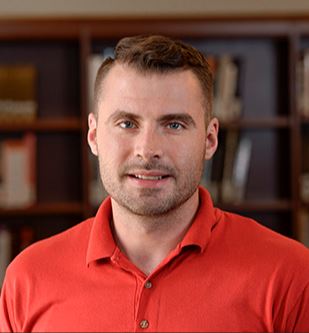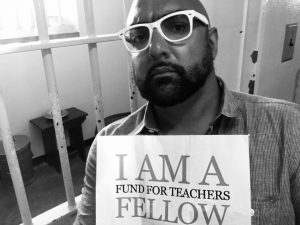Sixty-six years ago today, fourteen-year-old Emmett Till was lynched and shot for allegedly flirting with a young white woman at her family’s store in Money, MS. His body was recovered from the bottom of the Tallahatchie River three days later. Brandon Barr‘s students in Chicago are the same age as Till was when he died. Brandon felt that similarity would resonate with his English students in a powerful way. This FFT Fellow plans to add anecdotes and artifacts gathered from his exploration of sites associated with Till’s murder, as well as Civil Rights sites in Memphis, to develop a unit focused on his life and the legacy of his death. Brandon shared his motivation and plans for students below…
[minti_divider style=”3″ icon=”” margin=”20px 0px 20px 0px”]
As a veteran middle school teacher, a lot has changed over the course of my career, including learning standards, forms of standardized testing and the novel uses of emerging technology. For the most part, I have been able to navigate these changes well. One change that I have not been as quick to adapt to is creating curricular opportunities for students to think about why advocating for equity is important in history and in the present day.
The Civil Rights Movement is rife with historical moments that are sad and unfortunate. I have seen a number of my colleagues, and I include myself in this, who have taught in a way that victimize African Americans. While it is true that many African Americans were victims of living in segregated and oppressive societies, the Civil Rights Movement is also rife with examples of individuals asserting their collective power and resistance in fighting oppression. I am looking to reframe how I have taught history from the this time period to focus more on empowerment while also improving the accessibility of learning materials and increasing engagement for all learners. My students need to see examples of what it means to fight for justice in order to be ready to engage in “good trouble” when they encounter injustices and inequity in the future.

To that end, every year I try to teach about Emmett Till because his death has a significant legacy; it is often evoked when injustices happen in the present. I want to make the case study that I do with students more robust and highlight the actions of both Till’s mother and uncle. Both acted in ways that demonstrate agency and upstander behaviors, and my goal is to highlight their actions rather than leave my students focusing solely on the brutality of Till’s death. I think I can teach this history in a deeper way that shows the impact that direct confrontation of inequity and injustice can have when deployed in a strategic fashion. That’s why I designed this particular fellowship and joined Fund for Teachers’ Equity cohort with an Innovation Circle Grant. Next week, I will visit the National Civil Rights Museum in Memphis and the Emmett Till Interpretive Center in Sumner, MS, to strengthen my instructional approach to this period of his history using an equitable lens for how the information is shared and presented to my students.
In thinking specifically about equity, there is the principle of direct confrontation that dictates that there is no path to equity that does not involve a direct confrontation with inequity. When we think about the historical legacy of the Civil Rights Movement, we see the power of individuals actively confronting inequity. The actions of individuals created real change because of their engagement and advocacy. I want my students to understand that African Americans lived (and in many instances still live) in environments that sought to diminish their collective power and privilege. I want students to see the creativity that many individuals demonstrated in finding solutions that fought inequity and dramatically improved the quality of life that African Americans can have in the United States because of their direct action. By extension, I want students to think about problems in the world today that stem from inequity and reflect on how they may use their collective voices and actions to induce change.
 In 2010, Brandon received a Fund For Teachers grant to explore Holocaust and WWII sites, meet with survivors, and build a relationship with a partner school in Berlin, Germany. From that experience, he became a regional consultant for IWitness and was present for the 70th anniversary of the liberation of Auschwitz. Read more about that experience on his blog published by Facing History & Ourselves. (Photo of Brandon courtesy of the USC Shoah Foundation.Top photo of Emmett Till courtesy of the Southern Poverty Law Center.)
In 2010, Brandon received a Fund For Teachers grant to explore Holocaust and WWII sites, meet with survivors, and build a relationship with a partner school in Berlin, Germany. From that experience, he became a regional consultant for IWitness and was present for the 70th anniversary of the liberation of Auschwitz. Read more about that experience on his blog published by Facing History & Ourselves. (Photo of Brandon courtesy of the USC Shoah Foundation.Top photo of Emmett Till courtesy of the Southern Poverty Law Center.)

